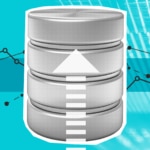The latest release of SolarWinds® Database Performance Analyzer (DPA) software includes table tuning and index advisors for PostgreSQL—building on DPA’s existing performance monitoring capabilities.
Over the last thirty-five years, there’s been a steady rise in the role and evolution of open-source technology—including in the competitive world of database management software. Big names in the world of open-source tech for database management include MySQL, MongoDB, and PostgreSQL. Typical uses for open-source database management software are apps, data warehouses, analytics, and online transaction processing.
For companies with particularly hefty data needs, the advantages of using open-source database management systems are clear. First off, there’s cost, which is a major factor for enterprises in the small to mid-tier range. While big-name commercial database companies tend to have restrictive licensing agreements, open-source solutions like PostgreSQL have a vast range of vendors and come with lower licensing and maintenance costs. In many cases, they're cheaper by a factor of ten. But it’s not all about short-term thinking and savings. There’s flexibility and scalability to consider. For companies looking for a reliable open-source solution, PostgreSQL provides an assurance of flexible, future-proof capabilities. PostgreSQL adheres to the ANSI/ISO standards for the SQL language but also thrives off community commitment to steady, incremental improvement.
While a lot of enterprise software is still built to the traditional waterfall model (meaning development times are locked in by design), for on-the-fly improvements, enterprise-grade open-source tech like PostgreSQL is largely free from the constraints of a unilateral roadmap. Thanks to a readily accessible code base and a dedicated community of users and developers, PostgreSQL has been in a constant state of natural evolution. From features to bug fixes, turnaround times can be quick. Even without all the in-house adjustments made by its many users, PostgreSQL is officially at version 16.2 and counting.
PostgreSQL: Origin of The Species
PostgreSQL's origins go back to 1996 and the University of California. When PostgreSQL was first released, typical database systems just weren’t good at handling complex data types and relationships. From the very start, precisely to overcome the limitations of traditional database systems, PostgreSQL focused on flexibility, extensibility, and quality of the code.
Because the PostgreSQL source code (written in the versatile C programming language) is available under an open-source license, users are free to change and implement it to their own requirements and technical specifications. As it is, out of the box, PostgreSQL gives simple mechanisms for developers to add new data types and their associated operations.
One of the great things about PostgreSQL is that it can be installed on all major operating systems, including Windows, macOS, and Linux. It’s flexible enough to handle workloads in applications ranging from single machines to large internet-facing deployments—on prem or in the cloud. In short, because it fits squarely in the enterprise grade database management world—but comes with all the advantages of an open-source offering—PostgreSQL is one of the smarter choices for scalable database management.
Vital Signs of Life
Unfortunately, no matter how flexible or reliable the underlying software is, very few database implementations are pitch perfect. This is why monitoring database health and optimization opportunities is vital. Even with the best of implementations, especially as data demands grow, inevitably there will be costly database performance issues—often due to database design problems or poorly coded SQL statements.
To match the rise of PostgreSQL the latest release of SolarWinds DPA has evolved and now includes comprehensive database performance analytics for PostgreSQL, including on EDB, Microsoft Azure, Amazon RDS, Amazon Aurora, and Google Cloud SQL.
If you are already using PostgreSQL or intend to migrate fed rom Oracle or SQL Server, the latest version of DPA ships with three powerful PostgreSQL tuning advisors:
The DPA dashboard gives you a visual view of overall database health and provides real-time recommendations on actions to take. If you’re not using DPA yet, learn more about PostgreSQL performance monitoring and Download a Free Trial.








